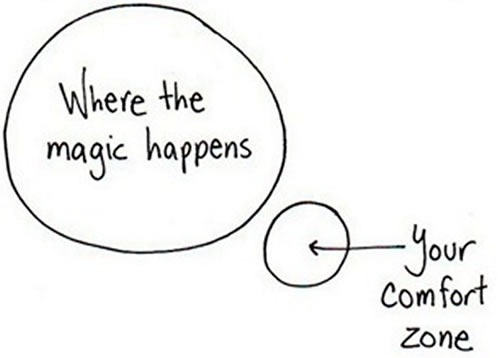 Since starting to create content online, a lot of people have reached out to me, wanting to learn how I got started. I’m humbled every time I am asked because I still see myself as a total noob. But, one of my fundamental beliefs is that the best time to teach something is right after you’ve learned it. Below is a lightly edited version of an email I sent in response to someone asking for advice. My hope is that it can help someone who is looking to start creating, but doesn’t know where to start. -------------- Let’s start with a few important points to inform your mindset as you start off. 1. Method - Right now is the perfect time to experiment with different mediums. You should try podcasting, writing, and video to figure out which you like best. You can work your way up to all three eventually, but it is easier to start with one focus. Starting with the one you like will allow you to maintain production when the initial excitement wears off. There is no right or wrong answer, only choice. Luckily, you can sample all of these very cheaply. If you have an iPhone, you can shoot video or record audio there. If you are worried about production quality, realize that there are videos on YouTube shot on low-quality cameras that have over 30 million views. It’s the story and message that matter, not the equipment. 2. Niche - You can use guides like this one to find a niche, but I would caution you to not lock in anything initially. There are a huge number of YouTubers that starting vlogging, then broke out once they started making videos about sports or art. That being said, if there is a topic you feel like you could rant and rave about for hours and hours, that’s how great popular podcasts start. It can also be a great way to network with other people in your industry of choice. 3. Truth - Ira Glass, the host/producer of NPR's This American Life always says in interviews that your first few years as a storyteller, you are going to suck. There really isn't any sort of trick to getting good at creating other than practice. Stay humble and you'll get better. Actionable steps If you’ve bought into the idea of test-driving some different mediums before starting, here’s how to do it. Writing - free write one page, stream-of-consciousness style every morning for 5 days (in a row). Do it before those 11a classes ;-) After the five days, edit one and post it to a Tumblr blog (doesn't have to be connected to your name & can change name whenever you want). Video - Over the course of a week, make 3 separate stories on Snapchat. Create an actual narrative instead of just a single shot. You can look at my Snapchat trick shot story for an example of how I played with that platform. After you're comfortable there, you can start making more permanent stuff for YouTube or Vimeo. Podcast - What kind of podcast would you want to do? Interview? Solo rant? How long? You can record audio on a phone. It won't sound great, but you can study the recording before sharing. Audio editing software like Audacity is free and easy to learn. If those seem too high level, start by listing your top 10 favorite creators on the internet (podcasts, Vines, youtube, blogs) and what you like most about each of them. Then take all those quality and list the ones that you would want your own brand to represent. Example; I love Jerome Jarre. I hope to emulate his joy, fun and silliness in my own life/content. Let me know how all this goes. Twitter or Snapchat are best. Seriously, let me know. - Aaron P.S. - Want to put off actually taking action? While I don’t advise that, you can learn more below. Pat Flynn's 3-part podcast series: How to Make Money Online. Check out episodes 192-194 of his podcast; http://www.smartpassiveincome.com/passive-income-101/ Gary V's advice to entrepreneurs and creators; https://youtu.be/LEDKTnhqQ7k?t=224
I did not break any records when I hit my Kickstarter’s goal, but I did hit it in three days.
Below, I’m going to outline three keys to my success that I would give to someone considering their own crowdfunding campaign. In preparation for my campaign, I read the book Bold by Peter Diamandis, which has a whole chapter outlining how to crowdfund a project. Diamandis stresses the importance of how you communicate the purpose of your campaign to your potential backers. He cites multiple examples of successful campaigns and interviewed people who have made it happen. There are also a multitude of “Kickstarter gurus” who offer their services to improve the quality of your campaign. While you may not have a budget to hire one, they often have blogs and YouTube videos that outline their basic keys for success. 1. Prep your backers and tout success A crowdfunding campaign makes or breaks it the first week it is live. It is very uncommon to ignite a late surge that funds a majority of a project’s goal after it has floundered for a few weeks. People like to be part of something successful and join movements that others have already taken part in. This makes it extremely important that you reach at least 25% of your funding goal in the first 3 days. Seem unreasonable? Not with proper preparation. You have to develop a plan for how you will drive traffic to your crowdfunding page early. Obviously, you will post on various social media platforms and tell your friends, but that’s not enough. I emailed more than 80 friends and family members multiple times before my campaign launched thoroughly explaining what I was doing. Most of them watched this video.
Many people emailed back that they wanted to contribute right now, but I simply told them they had to wait a week. While they were frustrated, I knew that I wouldn’t have an issue getting out to a fast start.
Once I launched, the pledges came rushing in. This meant that anyone who saw it through my post on social media came to a campaign that was already significantly supported. This social proof increased the likelihood of them joining in, too. Later on, I made sure to update both supporters and potential backers on how well the campaign was going. Even if this only inspired people to look around, they were still interacting with me, my podcast, and my brand. 2. Build a great page You will not be successful if you start your crowdfunding page and publish all in one day. Diamandis suggests at least a month of prep before your campaign launches. While that length is more important for folks with goals exceeding $20,000, I prepped for a little over two weeks. What does preparation for a crowdfunding page look like? First, you have to make a video for your page. Kickstarter’s blog has a great explanation on how and why to make a video. Their data set shows that your chances of success nearly double with a video on your page. Additionally, it allows you to clearly articulate why you are trying to raise the money. My friend Adam Haritan helped me shoot and edit the videos for the campaign. They don’t need to be Hollywood standard videos- production and passion are more important. Clear communication is essential for a crowdfunding campaign as well. Your page should very clearly explain what the money will be going towards. It should also be apparent in your budget that you are only asking for the minimum amount you need to succeed. Not only does a lower goal increase your probability of success, but it also makes it feel more attainable to your audience. 3. Smart and strategic rewards Every campaign should have clear and valuable rewards. Reward levels will vary by project, but everyone should have something at the $1, $25, and $70 level. These are the most common levels of contribution and will get the maximum number of backers behind you. Offer bigger rewards if you have something to offer that is worth such a donation. Make sure you account for the cost of producing your rewards into the goal. I gave t-shirts to everyone who contributed more than $25, and each shirt cost about $10 to produce. You don’t have to give a physical product at every pledge level either. I offered my time for anyone who contributed over $70. Both experiences taught me a lot about pricing physical products and charging an hourly rate. Side note; Follow through and send your rewards. It takes work, but you owe it to your backers. Be reliable. Mini-hack; The rewards also serve to benefit me as well. Every shirt I sent out has my logo on it, which will serve to build my brand. Getting coffee with larger backers has the potential to build both our networks and create new valuable relationships. Final Thoughts All of my advice essentially boils down to making it easy for people to contribute to a worthy cause. Make sure you take the time to say, “Thank you.” Basic manners and empathy are significantly underrated. An email or a phone call is nice, but take it to the next level with a handwritten note. A large portion of crowdfunding campaigns are not successful, but, interestingly, crowdfunders are 50% more effective the second time they try to run a fundraising campaign. So, if you fail, dust yourself off, learn something, and try again. If you liked this, be sure to check out all the people who helped: Liam Rosen, TopScore Joe Marmerstein Kenny Chen Alex Galbraith Squirrel Hill Chiropractic Pitt Ultimate Greeno, who has helped me edit a few episodes of the podcast Dan O’Conner, the very first backer Tyler Kunsa StartNow Pittsburgh Jimmy Leppert, UpCall Ultimate Dan Tremblay Larry Gioia Whiskey with Wes James Park, Los Angeles Aviators Kevin Tang Elizabeth Craig Photography Ryan, CB Insights Karly Schwab Michael Wilson Ryan Richardson Adam Pelleg JoJo Paulson Domasky Alex Thorne Mark Fedorenko Dave & Portie Watson Nathan D Hessington VI Art & Denise Chau A special thank you to my family members who supported me; Aunt Cheryl - You rock! Denny - Thank you, thank you, thank you! Holly - You’re the best Mom & Dad - thank you for your belief in me Ashley - I couldn’t have done any of this without you
Wantrepreneur, n.
definition: Someone enamored with one day running their own business, owning their time, and building a cash flow machine, but is afraid, or waiting, to pull the trigger on starting. Lots of people like the idea of being a successful entrepreneur, most of them never pull the trigger because they are waiting for the “perfect moment”. Unfortunately, there is never going to be a perfect moment. You might as well make a move right now. But, if you don’t feel comfortable, you should at least start doing these six things to make it easier on yourself when you decide to make it happen.
Doing these things will not guarantee your success, but they will certainly increase your odds. Want more insights and some book recommendations? |
Topics
All
If you want to support this blog, buy your Amazon products through this link.
Archives
August 2020
|


 RSS Feed
RSS Feed
